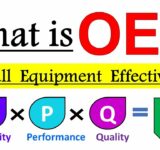For an e-commerce business, SEO is a powerful tool for driving targeted traffic and increasing sales. A successful SEO strategy can help you rank higher in the search engine results pages (SERPs), attract more potential customers, and ultimately boost your sales.
In this article, we’ll discuss the basics of developing an effective SEO strategy for your e-commerce business.
Understanding Your Audience:
Before embarking on any SEO effort, it’s important to first understand who your target audience is and what they are looking for when they search online. By researching keywords related to your product or service offering, you can gain insight into the language that your potential customers use when searching for products similar to yours. This information will be invaluable as you develop your SEO strategy.
Optimizing Your Content:
Once you have identified the language and terms that your target audience uses when searching for products or services related to yours, it’s time to optimize your content. This includes ensuring that all product descriptions, titles, images, and URLs are properly optimized for search engines. Additionally, creating high-quality content on a regular basis will help keep visitors coming back to your e-commerce website and improve overall rankings in the SERPs.
Improving Technical SEO:
Technical SEO is an important component of any successful SEO strategy for an e-commerce business. From making sure that site navigation is intuitive and quick to load, to optimizing Meta tags and page titles for increased visibility in the SERPs, there are many technical SEO elements that must be addressed. Additionally, making sure your site is mobile-friendly and implementing structured data can help enhance search engine rankings and user experience.
Building Quality Backlinks:
Backlinks are an important part of any SEO strategy; they signal to search engines that a website has valuable content for the web community. Building quality backlinks from other websites will help to improve your e-commerce website’s visibility in the SERPs. When building links, make sure you only link to quality sites with relevant content and good domain authority.
Monitoring & Tracking:
The final step of any successful SEO strategy for e-commerce businesses involves monitoring and tracking progress. By using various SEO tools such as Google Analytics, you can track changes in organic search traffic and keyword rankings over time. This will help you identify areas that need improvement and help you focus your efforts on optimizing for the most important terms.
SEO or search engine optimization is a powerful tool for e-commerce businesses. It can help you build your website’s visibility and drive more traffic to your store, resulting in increased sales. However, SEO isn’t a one-time activity; it requires strategic planning and ongoing effort to yield long-term results.
Here are the steps you should take to build an effective SEO strategy for your e-commerce business:
Step 1: Research Your Audience & Their Intentions:
The first step to building an effective SEO strategy for your e-commerce business is researching who makes up your target audience and understanding their intentions when they are searching online. To do this, you should consider using tools like Google Trends and Google Analytics to get a better understanding of your customers’ search behavior.
Step 2: Choose the Right Keywords:
Once you have done your research, it’s time to select the right keywords that will help your website rank in search engine results pages (SERPs). The best way to do this is by researching what people are searching for when looking for products like yours. You can use tools like Google AdWords or SEMrush to find relevant keywords related to your e-commerce business.
Step 3: Optimize Your Content for SEO:
Now that you know which keywords you want to target, it’s time to optimize your content for SEO. This includes adding relevant keywords and phrases in your product descriptions, titles, Meta tags, and alt tags. You should also use link building to increase the number of backlinks leading to your website.
Step 4: Monitor Your Website Performance:
Once you have implemented an SEO strategy for your e-commerce business, it’s important to monitor how well it is performing. This can be done by keeping track of key performance indicators (KPIs) such as rankings on SERPs, website traffic and conversions. Additionally, you should also measure your organic search visibility over time with tools like Google Search Console or Ahrefs.
Step 5: Adjust & Refine Your Strategy:
Finally, you should regularly adjust and refine your SEO strategy based on the results of your website performance monitoring. This includes experimenting with different keywords and tactics, as well as updating content to make sure it is still relevant to search engine algorithms.
Conclusion:
By following these steps, you can create an effective SEO strategy for your e-commerce business that will help you drive more traffic and increase sales over time.







